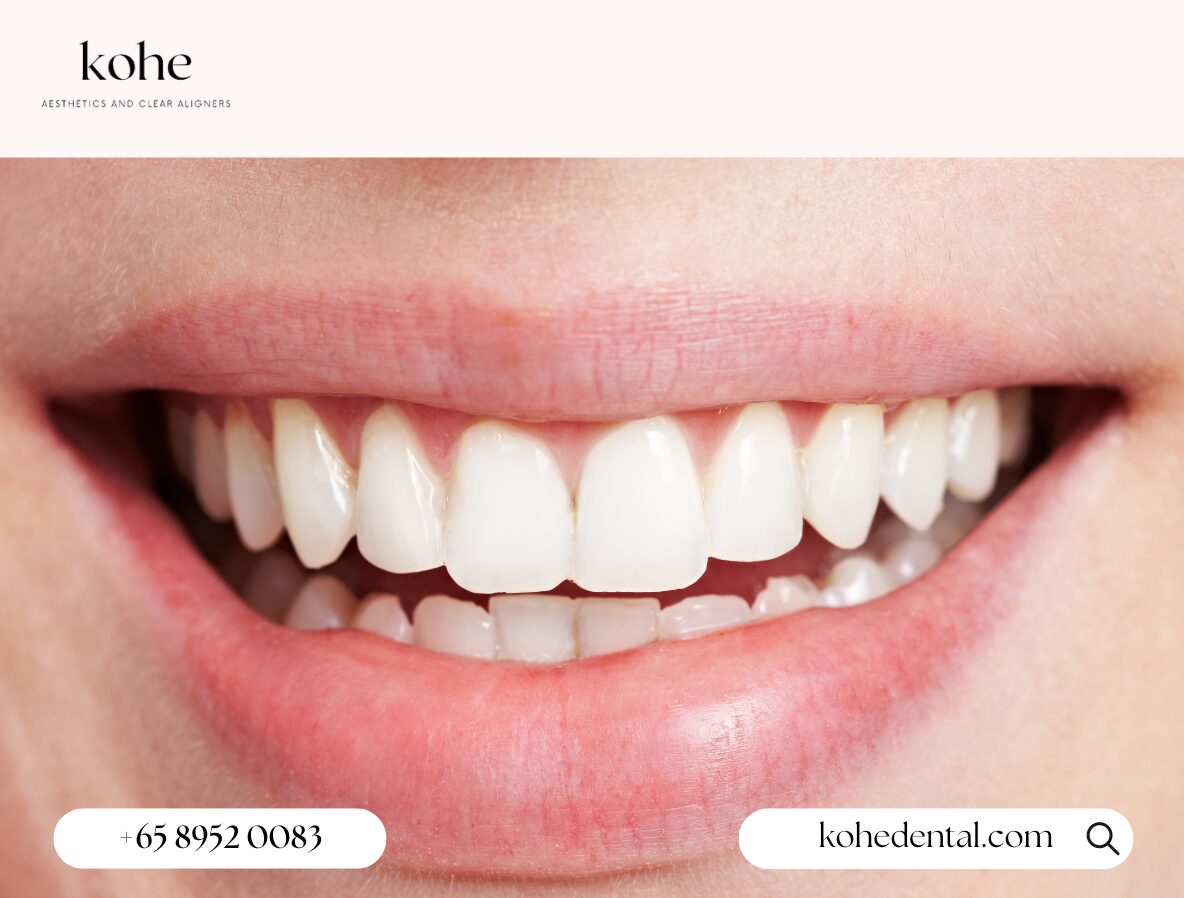One of the most common questions I receive from patients who are looking to do orthodontic treatment is: Why so long? Can I straighten my teeth quickly?
The best answer to this question is it really depends!
How fast your teeth can be moved to the ideal position depends on your choice of orthodontic appliance (whether you are using metal braces or clear aligners like Angel Aligner or Invisalign), how cooperative your teeth are, and how compliant you are at visiting the dentist for your follow ups or wearing the prescribed orthodontic appliance.
Many patients have the impression that a certain type of appliance works faster in straightening teeth. While this may be true for certain cases, it is definitely not a blanket rule for all cases. Your teeth are uniquely different from others and the speed of it moving will be slightly different from individual to individual! It will not be safe or ethical for a dentist or orthodontist to over promise results.
The largest determining factor for how fast your teeth can shift is the condition of malocclusion that you present with. The general rule of thumb is that the more complex the initial malocclusion is, the longer you are going to be in treatment.
This article has been written to break down whether it is safe to straighten or move teeth quickly, and how fast you can actually move your teeth.
Is It Safe To Straighten or Move Teeth Quickly?

The quick answer to this is that it can be unsafe to straighten or move teeth quickly.
If you are used to using GRAB or Amazon, you might have noticed that most of these delivery or marketplace apps offer the option for express or same-day delivery.
Unfortunately, in orthodontic treatment, it is not possible (at the moment) to have an express or same-day option. In fact, doing things too quickly in orthodontic treatment might actually impact your oral health.
Straightening or moving teeth quickly can pose risks to oral health and may not be considered entirely safe. Rapid orthodontic treatments often apply excessive force to the teeth, potentially leading to root resorption, gum recession, or tooth sensitivity.
The periodontal ligaments and supporting bone structure need time to adjust as teeth shift, and rushing this process can compromise their integrity. Additionally, fast tooth movement may result in relapse, where teeth return to their original positions once the treatment ends.
While some newer techniques claim to offer accelerated results, their long-term effects are not yet fully understood. Traditional orthodontic methods, which gradually move teeth over an extended period, remain the most reliable and safe approach. These methods allow for proper bone remodeling and tissue adaptation, reducing the risk of complications.
The safest way to straighten or move teeth is under the supervision of a qualified dentist with a focus on orthodontics or an orthodontist who can assess individual needs and create a treatment plan that prioritizes long-term oral health over speed.
Is There Such A Thing As Moving Teeth Too Fast?
I have come across certain systems or orthodontic companies that promise to deliver results in a short span of time. As a well-informed consumer and a dentist with a focus on orthodontics, I would caution you against jumping blindly into these seemingly good and express solutions.
While this might not be true for all express orthodontic solutions, there may be higher risks involved. It might also be that such solutions are only suitable for select cases. For example, the solution might only be able to treat front teeth, and not more severe bite issues.
There are a few risks of orthodontic treatment, such as the shortening of tooth roots, or devitalization of the tooth. The process of orthodontic treatment, regardless of appliance, involves putting pressure on the tooth for movement. However, this pressure may sometimes cause shortening of the tooth root, which can affect the stability and long term health of the tooth.
In some cases, the tooth could even devitalize, which means that the nerve of the tooth dies, leaving you with a necrotic or dead tooth! While there are many other factors that affect the likelihood of these negative effects, some argue that overly fast or aggressive tooth movement increases the chance of root shortening, or devitalization of teeth.
Some patients may notice that after the completion of braces or clear aligner treatment, their teeth start to become crooked after just a few short hours of not wearing their retainers. One major issue that comes up when we talk about moving teeth too quickly, is the risk of relapse. When you move your teeth into a different position, it typically requires a certain amount of time for your tooth to “recognize” that this is their new home.
I like to tell my patients that their teeth can actually move at any age, whether you are 8, 28, or 88 years old! Many of my middle-aged patients are shocked by this fact. If your teeth are not in a stable position, they can always start to move, or shift to another position!
For patients who have completed their orthodontic journey, it is especially important for you to follow the retainer wear that was prescribed by your dentist or orthodontist, if you want your teeth to be in the same position as they are now!
Can I Straighten My Teeth Quickly?

The speed your teeth can be straightened is dependent on your current orthodontic condition. The less severe it is, and the less malocclusion you have, the faster it can be straightened.
While it is natural to desire quick results, straightening teeth rapidly should not be the first priority!
You may have noticed that your favorite Hollywood or Korean celebrity suddenly has a bright and beautiful smile. Your first thought is: Hey, she definitely did not have those teeth in her last blockbuster movie! How on earth did she do it?
Well, the answer might just be that this celebrity did NOT undergo orthodontic treatment!
There are many options for straightening teeth. One of the most common dental procedures that Hollywood A listers undergo are dental veneers, which gives their teeth the appearance of having straight and beautiful teeth.
Do keep in mind that this may not be the most ideal treatment option for everybody, and it really depends on the current state and position of your teeth. I would recommend finding out more about your options by doing your own research, talking to a trusted dentist or orthodontist, to figure out what is the best way for you to achieve your desired smile!
If you are still on the fence about whether to take up orthodontic treatment because you are worried about the pain associated with it, I would suggest finding out more before making your decision. There are advantages and disadvantages to fixed braces and clear aligners, but both treatment options still involve a certain level of discomfort and commitment once you have started. They are certainly manageable, but knowing all your available options would help you make the best decision for yourself!
If you have already started treatment, what you can do to ensure that your treatment progresses smoothly and with minimal delays is to be compliant to any instructions given by your dentist or orthodontist. This includes compliance to appliance wear, going for scheduled appointments, and seeking help as soon as possible if there are disruptions to treatment (if brackets or attachments dislodge).
Can I Move My Teeth By Pushing On Them?
Well, technically yes, but you would have to be pushing on them for pretty long and very consistently.
Traditional braces and clear aligners work by putting pressure on your teeth, to get them to move to the intended position. However, you have to bear in mind that these appliances are applying constant, even, and light forces to the tooth over prolonged periods of time everyday (from 20-24 hours each day)
I like to describe teeth as trees planted in soil.
When there is a gentle wind, it is normal for the trees to swing gently, but you would not expect the tree to topple over if their roots are placed firmly and deeply in the soil. Similarly, teeth have slight movements that are usually undetectable by us on a day-to-day basis. This is not a concern if you have strong and healthy teeth and gums.
However, if there is a hurricane and there is a sudden violent force on these trees, these trees might end up toppling over!
Some might think: Hey can I use my finger or tongue to move my teeth instead?
The answer to that would be yes. But only if you can exert constant low pressures on your tooth for at least 22 hours a day. If not, it probably would not do much!
Interestingly enough, the position of your tongue and cheeks have a more significant, long term impact on your teeth.
If you are a chronic mouth breather, your cheeks would tend to have a constrictive effect on your mouth when you are inhaling, and this could potentially cause your teeth to grow into a constricted or even collapsed manner. If you have a tendency to stick your tongue forward while swallowing, this might exert a forward force on your incisors and you may find that your front teeth grow to stick out over time.
It is these daily, long standing habits, which would affect the position of your teeth.
How Fast Can Teeth Be Aligned?
The duration of your orthodontic treatment really depends on how complex your teeth condition is and how much work is necessary in order to straighten your teeth. Other factors like age and compliance also play a part in affecting the speed of tooth movement.
Think of teeth moving like you have to walk through a swimming pool. The speed of movement depends on many factors.
The larger your body size, the more inertia, and resistance, there is to move. A large tooth, like a molar, would be more challenging and also take longer to move, as compared to a smaller incisor like your front tooth!
The distance needed to move also matters. Imagine having to swim across a baby pool versus an olympic sized pool. A tooth that needs to move over a longer distance would obviously take more time!
The density of the water in your swimming pool also plays a part. Imagine that now, the water in your swimming pool has emptied and been replaced with sand! The force you would need to exert to walk across the same distance is much greater.
Generally, younger patients (teenagers) have softer bones, which makes it easier for teeth to move through them. This is because these patients are still growing, and the bone has not yet had the opportunity to grow harder or even brittle over time. Of course, this does not mean that older patients have very difficult bone densities to work with, or that tooth movement is not possible. It just means that it may take a little bit more time and effort.
Slow and steady wins the race in orthodontic treatment
While most patients often desire quick results in orthodontic treatment, it is important to understand that quick might not be the best. Straightening teeth is a gradual, and sometimes slow process. At times, straightening teeth too quickly can be detrimental to your oral health
Rapid tooth movement can lead to various risks, including root resorption, gum recession, and tooth sensitivity. The body needs time to adapt as teeth shift, and rushing this process may compromise oral health and lead to relapse.
Although some newer techniques claim to offer faster results, their long-term effects remain uncertain. Traditional orthodontic methods, which move teeth gradually, continue to be the most reliable and safe approach. The speed of tooth movement depends on various factors, including the type of appliance used, the complexity of the initial malocclusion, patient compliance, and individual biological factors.
While it is natural to desire quick results, prioritizing long-term oral health over speed is essential. The safest and most effective way to straighten teeth is under the supervision of a qualified dental professional who can create a personalized treatment plan. Patience and compliance with prescribed treatments are key to achieving a healthy, beautiful smile that lasts.
